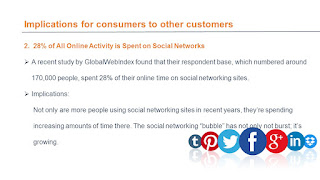DIGITAL ERA
Wednesday, 2 November 2016
What ‘digital’ really means
Everyone wants to go digital. The first step is truly understanding what that means.
Companies today are rushing headlong to become more digital. But what does digital really mean?
For some executives, it’s about technology. For others, digital is a new way of engaging with customers. And for others still, it represents an entirely new way of doing business. None of these definitions is necessarily incorrect. But such diverse perspectives often trip up leadership teams because they reflect a lack of alignment and common vision about where the business needs to go. This often results in piecemeal initiatives or misguided efforts that lead to missed opportunities, sluggish performance, or false starts.
Even as CEOs push forward with their digital agendas, it’s worth pausing to clarify vocabulary and sharpen language. Business leaders must have a clear and common understanding of exactly what digital means to them and, as a result, what it means to their business (for a deeper look at how companies can develop meaningful digital strategies and drive business performance.
It’s tempting to look for simple definitions, but to be meaningful and sustainable, we believe that digital should be seen less as a thing and more a way of doing things. To help make this definition more concrete, we’ve broken it down into three attributes: creating value at the new frontiers of the business world, creating value in the processes that execute a vision of customer experiences, and building foundational capabilities that support the entire structure.
China’s digital transformation
As individual companies adopt web technologies, they gain the ability to streamline everything from product development and supply-chain management to sales, marketing, and customer interactions. For China’s small enterprises, greater digitization provides an opportunity to boost their labor productivity, collaborate in new ways, and expand their reach via e-commerce. In fact, new applications of the Internet could account for up to 22 percent of China’s labor-productivity growth by 2025.
Yet the Internet is not merely a tool for automation and efficiency; it also expands markets rapidly. Greater adoption of web technologies in China could lead to the introduction of entirely new products and services if government and industry take the right steps to maximize the potential (exhibit). A new report from the McKinsey Global Institute (MGI), China’s digital transformation: The Internet’s impact on productivity and growth, projects that new Internet applications could fuel some 7 to 22 percent of China’s incremental GDP growth through 2025, depending on the rate of adoption. That translates into 4 trillion to 14 trillion renminbi in annual GDP in 2025.
Thursday, 27 October 2016
Digital globalization: The new era of global flows
Conventional wisdom says that globalization has stalled. But although the global goods trade has flattened and cross-border capital flows have declined sharply since 2008, globalization is not heading into reverse. Rather, it is entering a new phase defined by soaring flows of data and information.
Remarkably, digital flows—which were practically nonexistent just 15 years ago—now exert a larger impact on GDP growth than the centuries-old trade in goods, according to a new McKinsey Global Institute (MGI) report, Digital globalization: The new era of global flows. And although this shift makes it possible for companies to reach international markets with less capital-intensive business models, it poses new risks and policy challenges as well.
The world is more connected than ever, but the nature of its connections has changed in a fundamental way. The amount of cross-border bandwidth that is used has grown 45 times larger since 2005. It is projected to increase by an additional nine times over the next five years as flows of information, searches, communication, video, transactions, and intracompany traffic continue to surge. In addition to transmitting valuable streams of information and ideas in their own right, data flows enable the movement of goods, services, finance, and people. Virtually every type of cross-border transaction now has a digital component.
Trade was once largely confined to advanced economies and their large multinational companies. Today, a more digital form of globalization has opened the door to developing countries, to small companies and start-ups, and to billions of individuals. Tens of millions of small and midsize enterprises worldwide have turned themselves into exporters by joining e-commerce marketplaces such as Alibaba, Amazon, eBay, Flipkart, and Rakuten. Approximately 12 percent of the global goods trade is conducted via international e-commerce. Even the smallest enterprises can be born global: 86 percent of tech-based start-ups surveyed by MGI report some type of cross-border activity. Today, even the smallest firms can compete with the largest multinationals.
Monday, 24 October 2016
The new tech talent you need to succeed in digital
In today’s rapidly changing digital landscape, companies that understand their talent needs and know how to meet them have a competitive edge. Here’s how they do it.
While few would debate the importance of technology talent, its importance in successfully executing a digital transformation is often underappreciated. Over the next five years, large companies will invest, on average, hundreds of millions of dollars—and some more than a billion dollars—to transform their business to digital. And given that top engineering talent can, for example, be anywhere from three to ten times more productive than average engineers, acquiring top talent can yield double-digit investment savings by accelerating the transformation process by even 20 to 30 percent.1Of course, such talent is hard to find. In the next five years, we expect the demand for talent to deliver on new capabilities to significantly outstrip supply2: for agile skills, demand could be four times supply; for big-data talent, it could be 50 to 60 percent greater than projected supply.3
The new capabilities you need
Understanding what talent is necessary starts with understanding what capabilities digital businesses need. While those will vary by market and geography, successful digital businesses share some common traits: they’re focused on the customer, operate quickly, are responsive and agile, and can create proprietary insights. And given the rapid pace of change, companies will increasingly need to be able to engage with broader ecosystems encompassing a range of businesses and technologies as well as position themselves to take advantage of emerging artificial intelligence (AI) and the Internet of Things.
That requires IT systems that can process massive amounts of data, continuously deliver new infrastructure environments in minutes, be flexible enough to integrate with outside platforms and technologies, and deliver exceptional customer experiences—all while maintaining core legacy IT systems. This way of working is much more dependent on the collective skills and strengths of a multidisciplinary agile team rather than on the heroics or talents of any one individual. In short, this reality means people not only need to have strong technical skills but also to be able to function well in teams. Poor team dynamics can crush even the most talented individuals.
Thursday, 20 October 2016
Subscribe to:
Comments (Atom)

















































